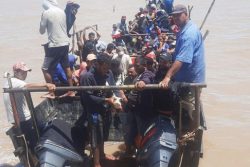Stabroek News spoke to Toshaos from various villages in the hinterland about the cost of living and how it is affecting them. The following are their comments:
Interviews and photos by Subhana Shiwmangal
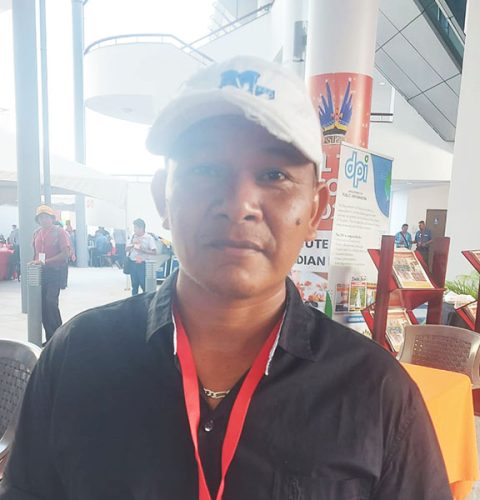
Monty Simon of Kabakaburi, Region Two: `The cost of living has been affecting us negatively, especially in the construction area. The materials are very costly and most of it you have to get from the coast. For example, persons on the coast when purchasing sand and stones, the cost won’t be so much because they will have it delivered directly to the work site located on the coast. But in our case now, we have to get a boat and transportation to transport these things to our village; we have to pay more for the building materials plus an additional cost for transportation to get the materials into the village. This has not only been happening in region Two but throughout the country. And, it’s something that we have to cope with until building materials are subsidized by the government to assist with the high cost, especially when the villages get these small government projects or for the government to put systems in place for the people in the hinterland area and the riverine communities. The cost for food items is not that high in the village. The cost varies because some items would cost more in the village but the prices are reasonable compared to how food items are sold for on the coastal area. For example, the cost for sugar has increased in the village but the price is high on the coast. A couple months back a sack of cement cost about $1600/$1800; now the cement cost over $2,000 per sack. Also, about a year ago one foot zinc cost about $200; now a foot zinc cost over $300.’

David Albert of Karasabai, Region Nine: `Firstly the cost of living in my village is not that high due to the improvement of the road. Also, because the village is located at the border of Brazil, things that we don’t get in Guyana, we would go across the border and trade like our farine and bring back stuff and so in the village. In Lethem, years ago the cost for groceries used to be a little bit higher but now, due to the road and you get more shops coming up, the cost for groceries got a little cheaper. Also, in my village a lot of people opened their own business, I myself is a businessman. The cost for food items got cheaper in our village due to that. The cost for some building materials and grocery items is not that relatively high; it gets high due to the freight cost you have to pay to transport the items from Lethem to Karasabai. I also try to make ends meet because I’m a farmer by profession. As a cash crop farmer I plant passion fruits, watermelon which I supply for the hot meal programme and, I also rear some livestock such as cattle to make ends meet; I just don’t depend on one thing for an income, I depend on both. We do a lot of farming in the village to cope; however, we would have suffered from the shortages of our basic staple farine but that was due to climatic conditions. Right now, we are replanting red beans, black eyes which we have a high demand for now then there is corn. For example, a couple months back a sack of cement cost $3,400; now the cement cost $3,500. Also, a pound of sugar a couple months back cost $200; now the sugar cost $240. We tend to buy some of our items from Brazil as well. Well, the prices for rice and washing soaps are cheaper. We use organic things like manure we get from the cow for farming, so the cost for vegetables is cheaper; we don’t use chemical fertilizers. For example, people sell bora for a $100 a parcel, including 20 strings of bora in a bundle. Right now, $50 for a passion fruits. We don’t have to worry when buying vegetables and we are going to plant more vegetables due to the feeding programme. As a mixed crop farmer, I would always encourage people to don’t depend on one thing only; do other things and you will see the cost will get relatively cheap. There is always room for improvement; more could be done in terms of agriculture. We need more training in my village because presently I’m asking for a vet to be trained right from the village instead of using the ones from the coastal area.’
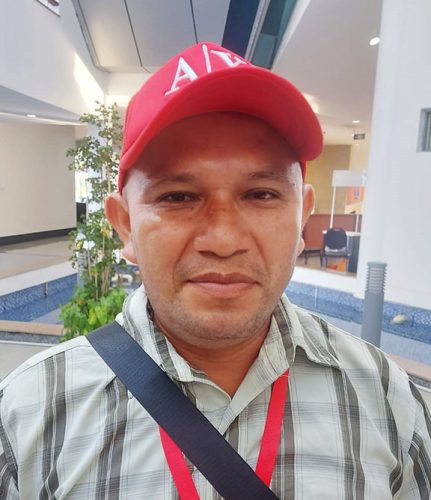
Samuel Miguel of Manawarin village, Moruca, Region One: `We have a lot of challenges that we are going through with the cost of living. The business owners in the village are doing good yes but there are a lot of challenges when they are transporting their groceries or what ever they have from Charity to Manawarin; it is very costly. Also, we do not have an official cargo boat or village boat to transport the items into the village; the villagers use a private boat. So, the cost is very expensive but our business people they are working and the little money they getting, they are trying with it but they are not doing well. Even, if they are to travel out of the village, they have to pay like $100,000 for their journey just to do banking in Anna Regina; this is very costly as well. So, the little money that the villagers have is not worth it. The cost for the food items is high then the boat rates for the villagers to travel back is like we are not earning anything much. For example, a couple months ago, transportation cost from Charity to Manawarin using the cargo cost $5000; now to travel with the boat price from Charity to Manawarin cost $5000. The prices for all of the food items gone up such as: rice, flour, sugar…even the cost for gas gone up. Workers’ salary is low as well. A few months ago, a 10 kg Karibee rice cost $2,000; now the rice cost $2,500. I really need assistance from the government. That is for government representative to come into our village and speak with business owners to let them know that these things should not have happened. We are trying with our council but still we are getting complaints from the residents about the cost of living. Look at how phone cards are sold in the village, the villagers buy from the company for the same price as on phone card but when that same $1000 phone card goes into the village, it is sold for $1500.’
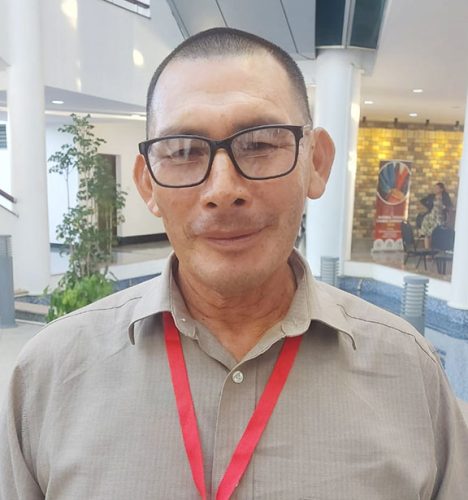
Henry Hendricks of Mashabo, Region Two: `The cost of living is high a little because we are seeing how the cost for things going up but not by much. The money we pay for transportation to come out from the village and to go on the coast in order to go to the supermarket, buy items and take it back is costly. But we are hoping in the future with this government who promised to help us with the transportation and so forth, will ease us a little. The government had already helped us with boats and engine. The cost for food items is high because not all are the same. Certain supermarkets the cost might be higher than the rest. I mean today you will want to run to the supermarket that sells cheaper. Even though people are planting vegetables, the cost for vegetables is a little high in the village. I have my own kitchen garden that helps me with vegetables; only other grocery items I would purchase at the market. For example, last month, four pounds of sugar cost $700 and something; now the same sugar cost $800. Every day things going up. A 10 kg Karibee rice a couple months back cost $2,200/$2,100; now the rice cost $2,600. I don’t know what villagers can do to make the cost of living drop but for now, we just have to cope with it.’
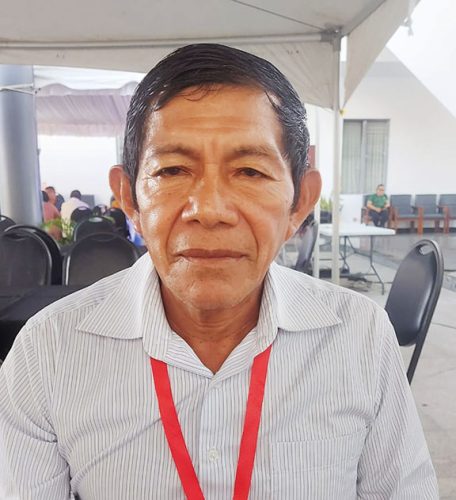
Jackson Joel of Yakarinta, Region Nine: `The cost of living is affecting the community and villagers in relation to the transportation cost. When villagers leave the community to go over the river and buy certain items the cost is costly. Right now, we are in critical conditions because our farms were damaged by wild animals, flooded and so forth. Right now, we are finding difficulties in our food side. So, we find it difficult in our community to get by. The cost for grocery items is very costly. For example, a couple months back a 20 pounds flour cost $1,600; now the flour cost $3000. Also, a few months back a 20 pounds sugar cost $1,200; now the sugar cost $1,800. Even the cost for rice gone up. The cost for gasoline gone up as well. If the grocery prices drop it would be better for us, villagers.’
Raul Hendricks
Raul Hendricks of Santa Rosa, Region One: `The cost of living is really affecting Santa Rosa negatively because there are so many things, particularly the prices for food items that are getting more expensive now. Commodities are harder to get and reach in the village. In that way, the rising cost of living is really affecting the village and Santa Rosa is the largest Amerindian settlement since we have 13 satellites. For example, before a 10 kg Karibee rice cost $1600/$1700; now the rice cost $1,900. Also, before a sack of cement cost $1,800; now the cement cost $2,600. Even the cost for a pound of chicken, beef and pork gone up. In Georgetown, the price for meat is sold cheaper. I think the government should better manage the system. That is when the cost for things increased due to shortage and when the cost reduces on the market, everybody needs to reduce their prices for things as well. For instance, the gasoline prices, when the prices of gasoline reduce at gas stations, the government should ensure systems are put in place to have these gas station reduce their cost for gasoline as well. Another way of dealing with the cost of living is for the government to increase public servants’ salary more.’
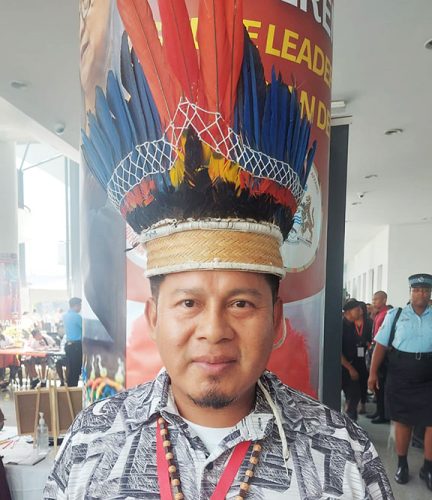
Ridley Joseph of Tasserene, Region Seven: `The cost of living is not only affecting my village but generally everywhere; it not only affects Guyana but globally. What we intend to do is to embark into food security and that has been backing my community mainly because the community is a mining one. What the villagers normally do is to buy food items from the coastland area and bring them into the mining community. What’s happening now is that we are embarking into agriculture like cassava production. We just ask the government for a facility to help in the manufacturing process, hopefully we get that. I also requested a shade house for the cash crop. This can allow us to have a competitive price given to persons coming into the community while at the same time the community can provide for its people and the excess money we can use it in the community for development. Right now, the cost of living is affecting the villagers and I since parents are not being able to provide for their children. So, it’s very difficult for them due to the recent hike due to the basic necessity like rice, sugar. Those who are not into mining it’s very difficulty for them and probably some sort of assistance from the government will be good to help these villagers. For example, a couple months back a 10 kg Karibee rice cost $2,500; now the rice cost $4,500. Also, a few months ago a 10 kg pack of sugar cost $2,000; now the sugar cost $6,000.’
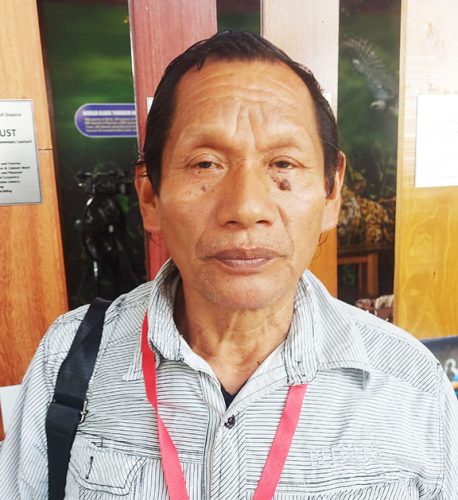
Winsbert Benjamin of Hururu, Region Ten: `The reason why cost of living is so high in my village is because villagers travel to Linden and purchase items then return to the village. The transportation cost to bring the items into the village is why the cost for grocery items is high. We use boat and minibus. We try to cope with the vegetables and fruits that we have on our farms but things are still expensive because we have to buy other items out of the village, including building materials. We plant like plantains, cassava, eddoes and sell it but what we can’t produce, we have to buy. The prices for things vary. For example, a couple months back a 10 kg Karibee rice cost $2,200/$2,300; now the rice cost $3,000. The cost for fuel gone up as well. A couple months back a gallon gasoline cost $1,400; now the fuel cost $1,600. The prices fluctuate. I think items that we buy from other countries like Brazil and bring into the village cost more money. Years back there were representatives from the government that come in and talk to shop owners/vendors to have the prices that they are selling their food items at a high cost to have it reduce. But now, we don’t have that. The government should bring back that system.’
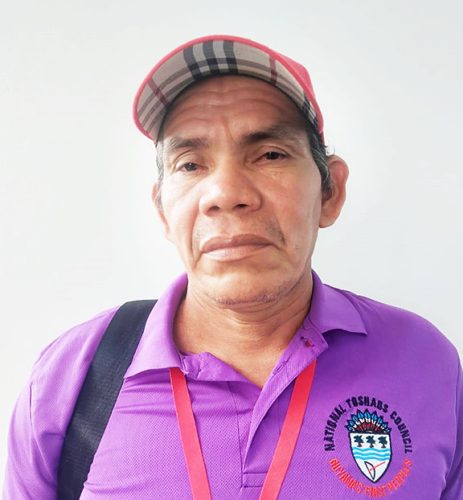
Rufus Rodrigues of Kokerite, Moruca, Region One: `The cost of living is affecting villagers when it comes to transportation from Charity to Kokerite. And, because villagers have to travel all the way to Charity to buy items, the transportation cost to get the commodity into the village is costly, so even the cost for food items has gone up in the village. We have farms so we don’t have to worry about vegetables, ground provision and seasoning that much. For instances, a couple month back a 10 kg Karibee rice cost $1,600; now the rice cost $3,000. Also, a few months ago, a small Thunderbolt flour cost $360; now the flour cost $500. If the villagers can get some sort of help with the transportation that will help us with the cost of living.’
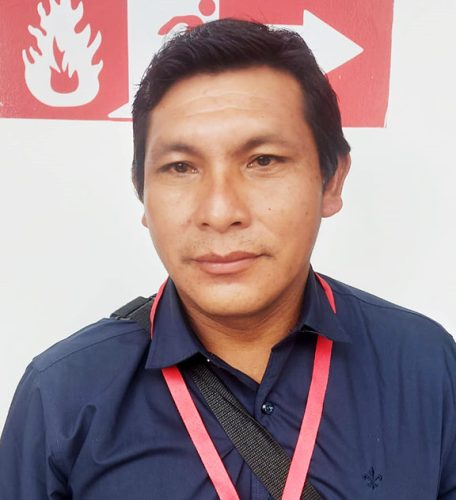
Bernandine Fernandez of Sawariwau, Region Nine: `The cost of living in our community is very high for us because of the road. We have to spend more when transporting items into the village due to the bad conditions of the road. If the road is reduced in the future, it will reduce the cost of living because we have to travel a good distance from our village to Lethem to purchase our items and then return to the village. That is our main challenge. The transportation price cause business people to raise their prices high for food items as well. The transportation from Sawariwau to Lethem return is $6000. Right now, we have a shortage of cassava since we have faced drought and recently, we had a flood and that almost destroyed all of our crop we depend on. Right now, most of the villagers depends on rice which we buy from Lethem. For example, a couple months back a 100 lbs Karibee rice in Lethem cost $12,000; now the rice cost $15,000. Also, a 30 kg cooking gas a couple months back cost $6,000/$5,000; now the gas cost $7000. Right now, the weather is good so we villagers started to replant again. We have our own kitchen garden we use to cope with the cost of living. Villagers are mainly focusing on agriculture now and we have faced challenges and we have learnt so much. That’s why we have submitted a proposal to the Ministry of Agriculture for savannah farming and drought preparedness, so we don’t have to face this kind of problems in the future.’







